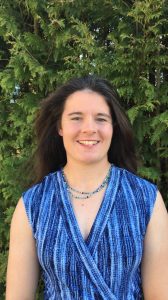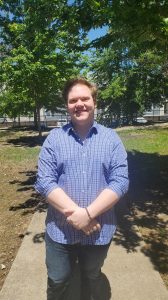University of Mississippi 2020 graduates Tereza Janatova and Matthew Currie are hoping to change the game when it comes to biomedical equipment.
Under the mentorship of faculty in UM’s biomedical engineering department, they worked on “DataBrace,” a “smart” knee brace that improves mobility and tracks movement.
In the fall of their junior year, Janatova and Currie discussed ideas for a senior design project. They were enrolled in electrical engineering with an emphasis in biomedical engineering and wanted to combine both aspects of the fields. With the help of Dwight Waddell, UM chair and associate professor of biomedical engineering, and Chip Wade, UM assistant research professor of biomedical engineering, they discussed the idea of working on a project that would consist of designing a knee brace with smart features. That project became DataBrace.
“While we brainstormed this concept, they [the students] really drove the idea and development of this aspect of the project,” said Troy Drewry, UM professor of practice in biomedical engineering, who served as a mentor to Janatova and Currie during the project.
“Our design gives us an edge over our competitors, as opposed to standard ‘fixed hinge’ design because it more accurately represents the natural motion of knee,” Currie said. “Current hinge designs are bulky, not user-friendly and could not be called smart. Our hinge will implement electronics that allow the user to see their range of motion over the day and send this data to their physical therapists or doctors.”
Currie and Janatova saw an opportunity to push the project forward and help design a new kind of brace that caters to collegiate athletes. In addition to the hinge itself, the students wanted to develop a technique that measures improvement of a patient in the brace during treatment. They came up with the idea for an app that stores the data gathered from the brace. This way, information could be sent quickly and accurately to medical specialists.
Currie said he developed his passion for biomedical engineering during high school, where he participated in robotics competitions.
“One year, the research project that goes along with the robots was health-themed, so I saw all these different biomedical prosthetics, attachments and braces,” he said. “That’s what really got me driven to start working with biomedical devices.”
Janatova has had many experiences with injuries and rehabilitation as a student-athlete and member of the Ole Miss women’s tennis team. She said the work on DataBrace has provided her with an opportunity to explore something she would like to do.
“Having personal experience with wearing a knee brace and going through the physical therapy has been a tremendous help,” she said. “It drives my inspiration to work in a field that positively impacts the lives of many people and helps to improve their well-being, which is the goal of combination of engineering and medical fields.”
At the beginning of spring semester, Drewry mentioned the Gillespie Business Plan Competition. Both students were immediately drawn to the idea and sent in their application that February.
Despite the challenges due to COVID-19, such as lack of equipment at the university, both students were determined to progress with this project. Using a live video chat, Janatova and Currie pitched DataBrace at this spring’s Gillespie competition to a panel of judges, where it ended up placing second and winning the Thomas W. Colbert-Community Bank Innovation Award.
After the competition, both students chose to focus on the rest of the semester’s coursework, but they do not plan to abandon DataBrace.
“We have finalized some design changes and discussed some ideas for the instrumentation that we will work on during the next few months,” Janatova said.
To future engineering students, Janatova offers some advice: “Be prepared to take on challenging tasks and projects because those will best prepare you for the future. I would also emphasize working in a team environment and getting leadership experience. Most importantly, be confident in your skills and never give up on your goals and dreams.”

